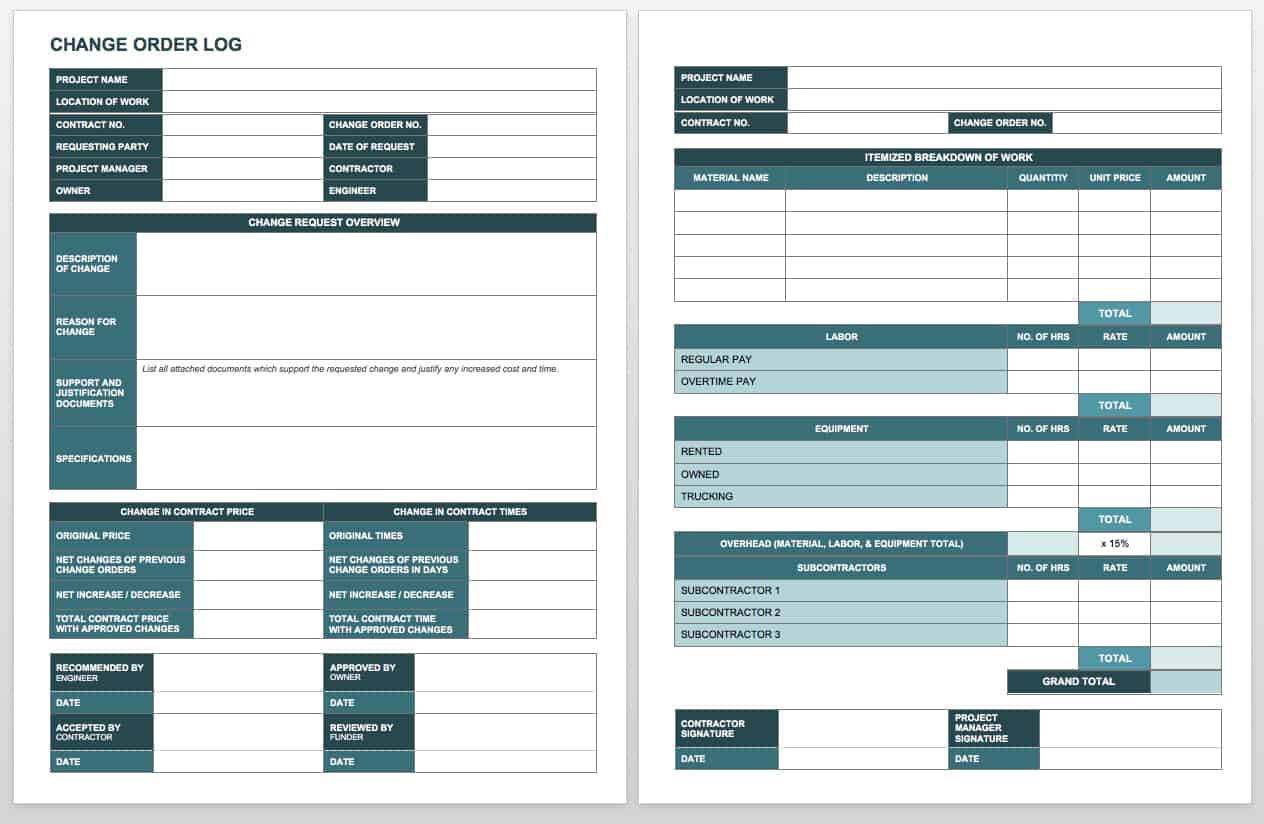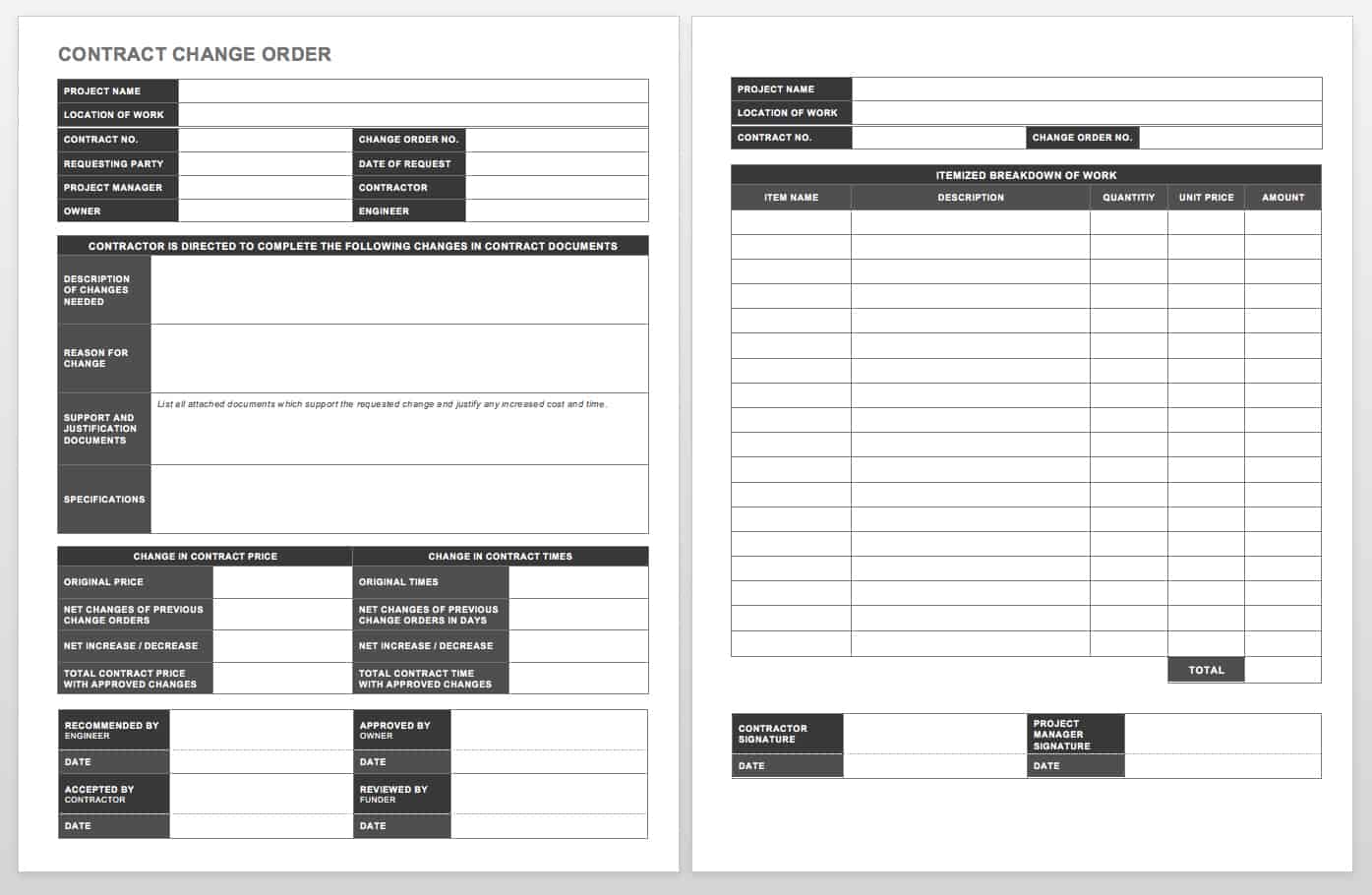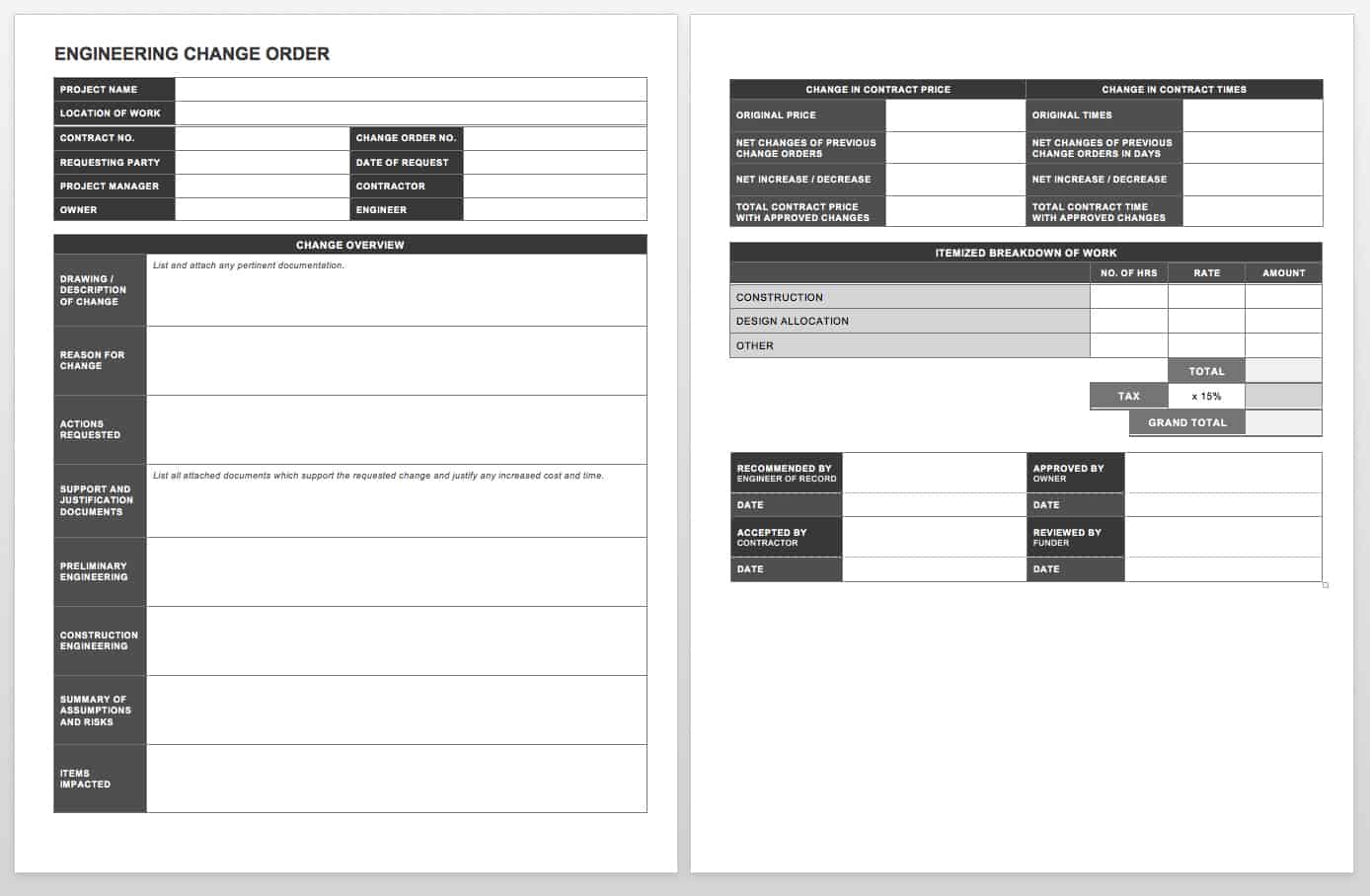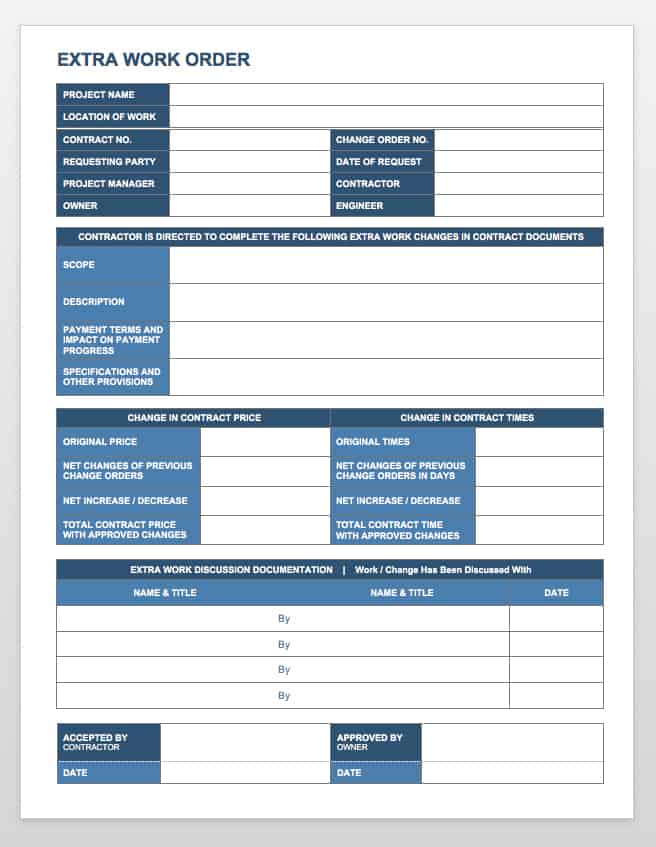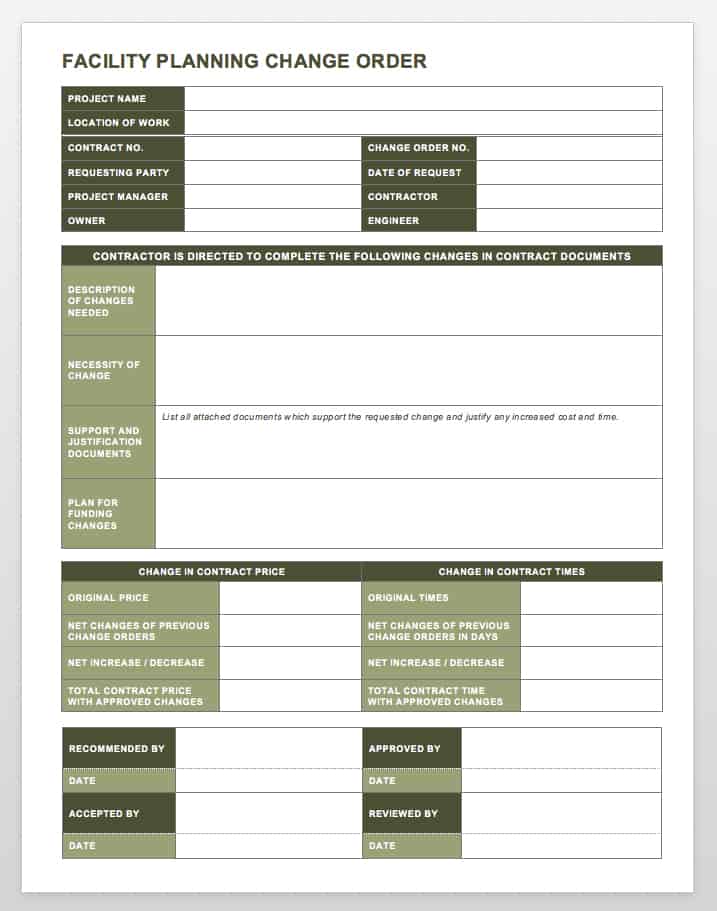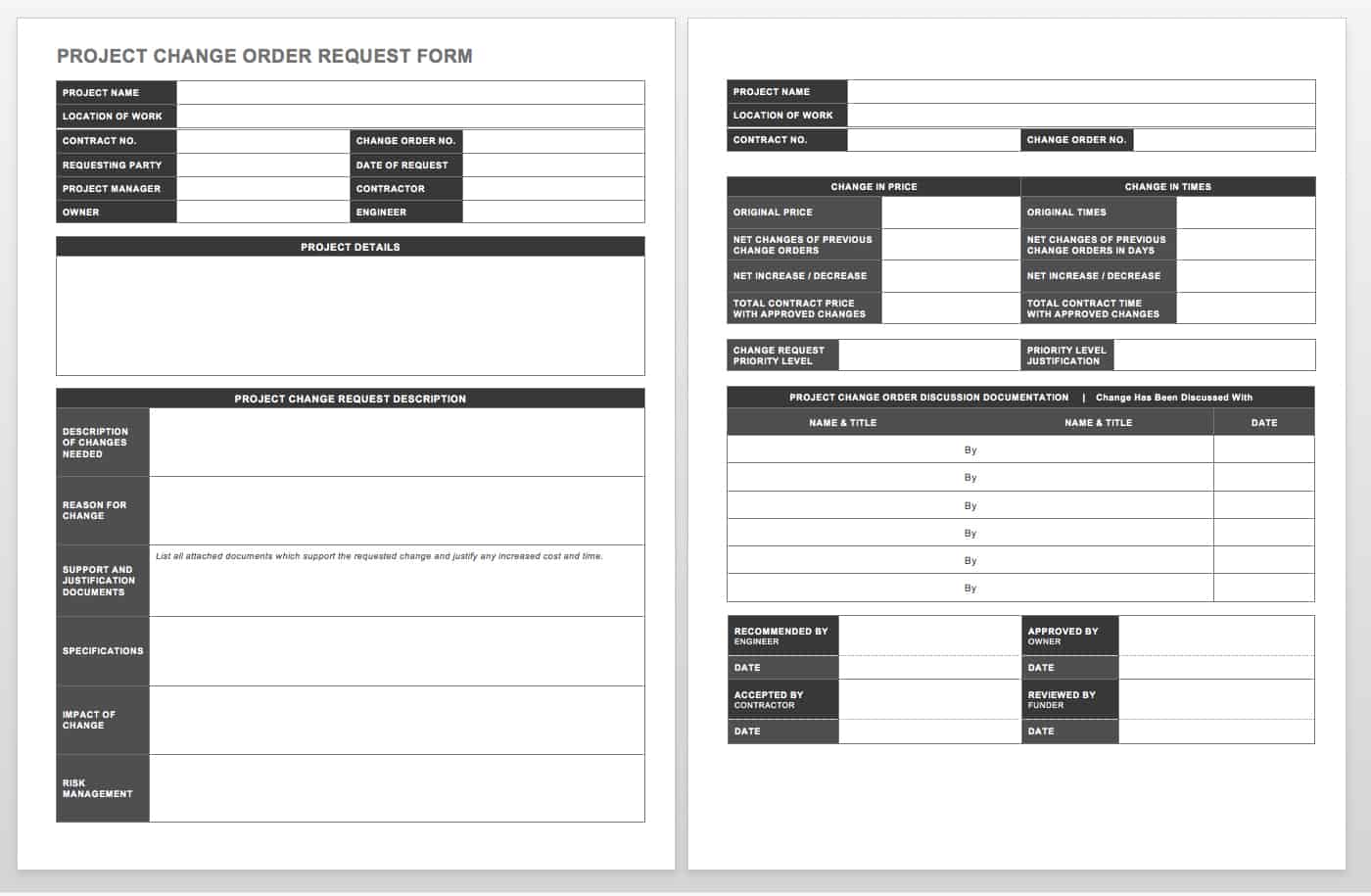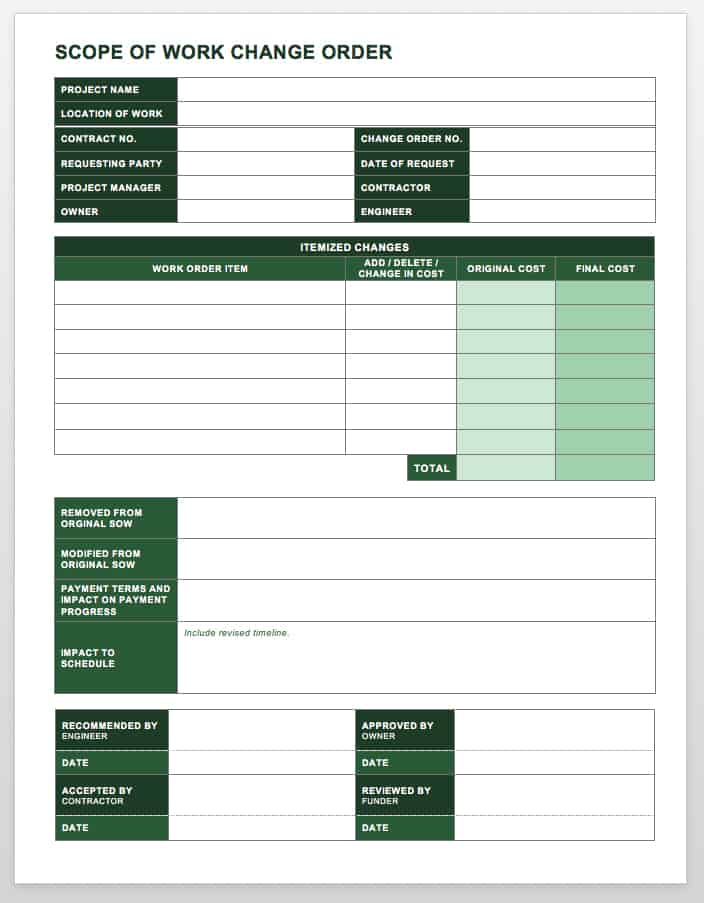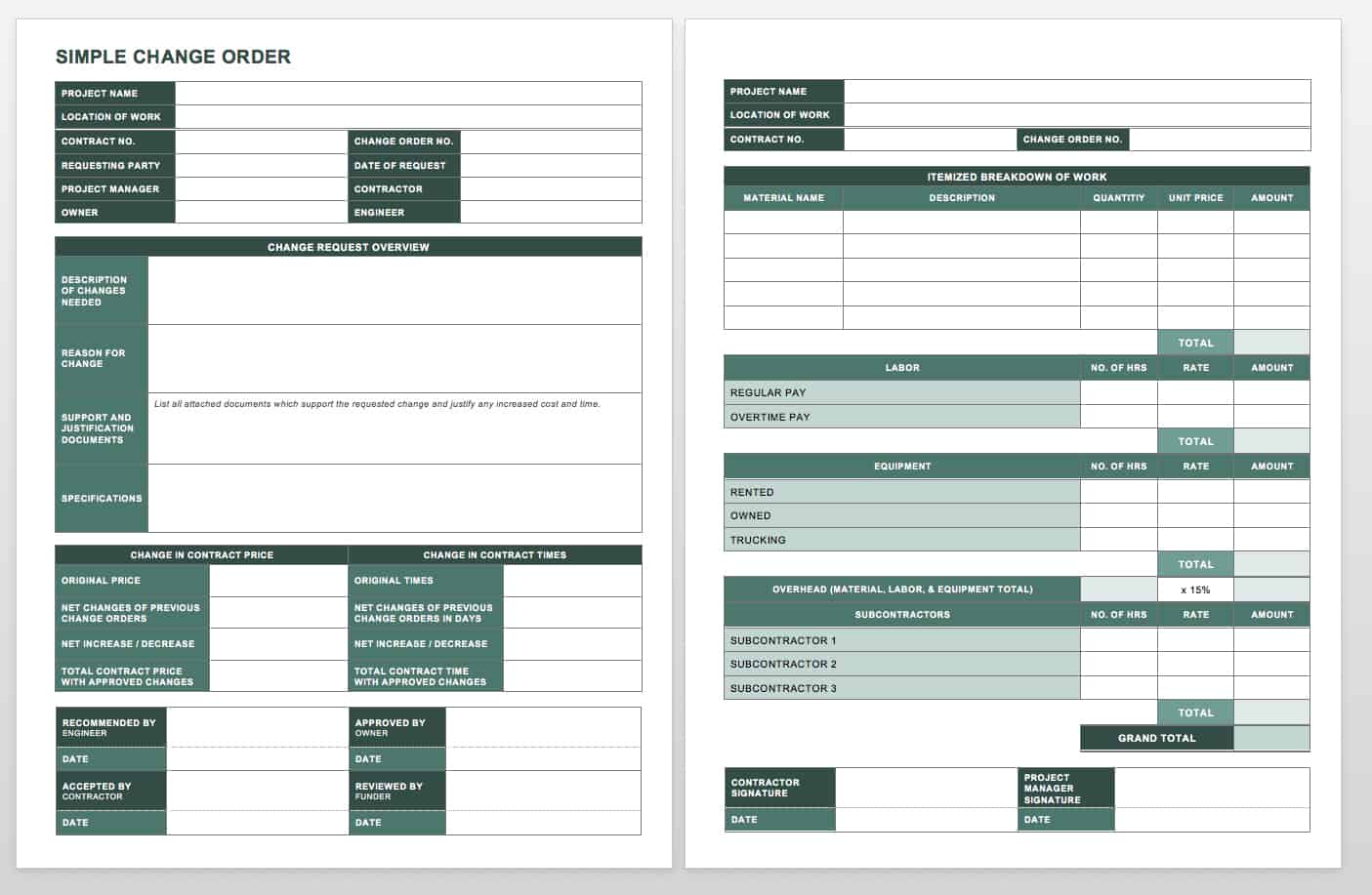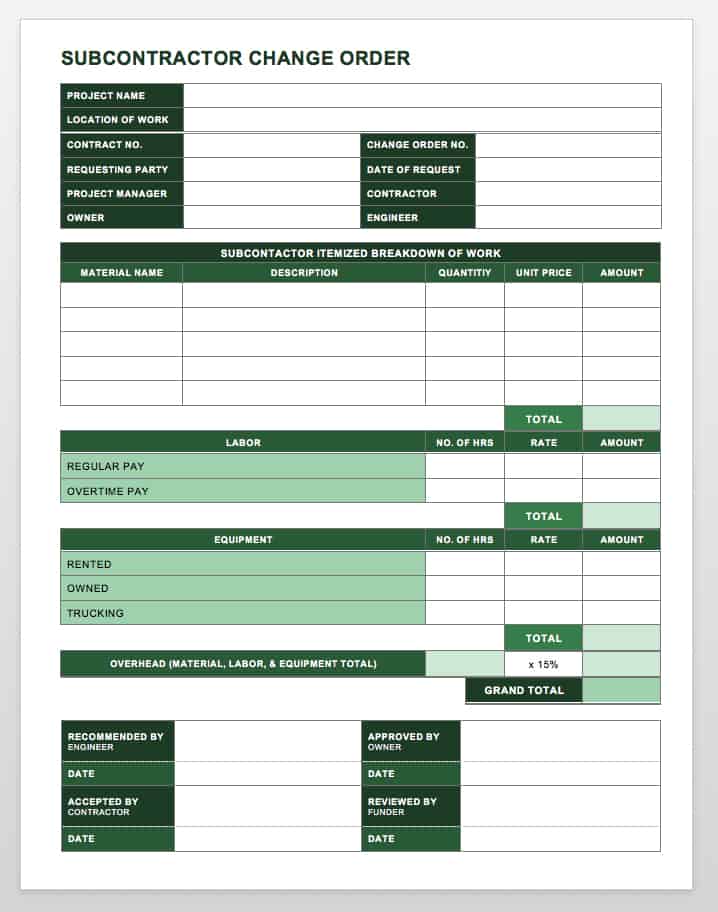Change Order Templates and Forms
Change Order Log Template
If you’re creating a change order for the first time, or just need to make your existing forms more effective, use our free change order templates to get started. Below you’ll find downloadable forms for a variety of project types and purposes.
When you need to track all change order requests over the construction project life cycle, use this change order log. Describe each change and the timeline of the request, the cost to date, the added time to complete the request, and the final total.
Download Word Template
Download PDF Template
Try Smartsheet Template
Streamline Data Collection with Smartsheet Forms
Turn collected data into actionable insights instantly
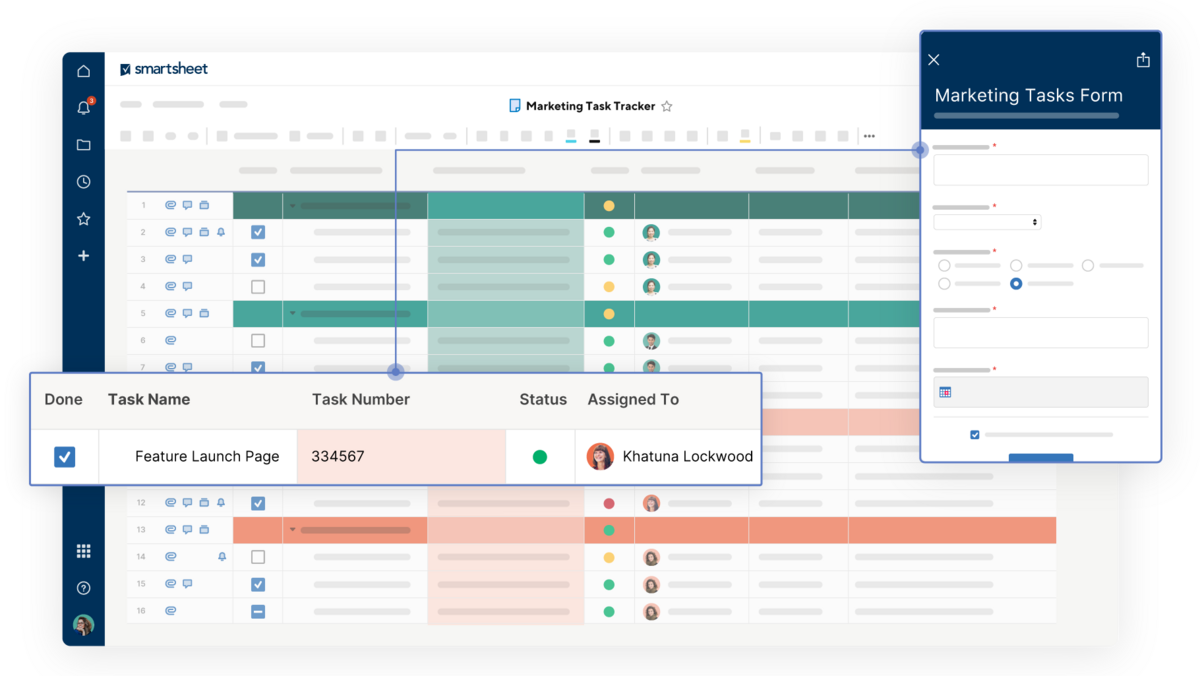
Smartsheet forms capture consistent, accurate data and feed it directly into an organized sheet, giving you instant visibility. With customizable branding, conditional logic, and mobile accessibility, Smartsheet forms not only simplify data gathering but also allow your team to take action right away—whether you're tracking requests, collecting information, or managing fieldwork.
Change Order Request Summary Template
Use this form to describe the requested changes, and to break down the impact of changes on additive and deductive costs in terms of labor, materials, and equipment. Add up the general contractor’s costs, the subcontractor’s costs, and the markup for each, and get final approval before proceeding with changes.
Download Word Template
Download PDF Template
Try Smartsheet Template
Contract Change Orders Template
Use this all-purpose change order template to request work for any type of project that goes beyond the scope of the original contract. Simply fill in the reason for the change order, details about the location, quantities, and specifications, and the previous and updated prices and times.
Download Word Template
Download PDF Template
Try Smartsheet Template
Engineering Change Order Template
For changes that will have an engineering impact, use this engineer change order template. It allows you to calculate construction costs, design allocations, and sales tax, detail preliminary and construction engineering, and summarize assumptions and risks. You can also attach a drawing or spec of the change, and get the engineer of record’s name and signature.
Download Engineering Change Order Template
Extra Work Order Template
Use this form to request changes from a contractor to the owner, from the general contractor to a subcontractor, or from a subcontractor to the general contractor. It allows the requestor to describe the scope of the extra work, the required quantities of labor and materials, what payments will be made (and for how much), the impact on the schedule, and who has approved the work.
Download Extra Work Order Template
Facility Planning Change Order Template
Facility planning and construction project managers can use this form to request or approve construction changes. It offers space for the requestor to explain why the change is necessary ( and why it’s not part of the original contract), who is requesting it, how it will be funded, and the impact on the project.
Download Facility Planning Change Order Template
Project Change Order Request Form
Use this change order request form for any type of construction or engineering project. In addition to basic requestor and change information, it captures data on changes for specific project categories including scope, schedule, cost, quality, risk management, communications, priority level, and closeout. You can also enter any recommendations for proposed actions.
Download Project Change Order Request Form
Simple Change Order Template
Use this basic form to quickly and accurately request construction project changes. Simply enter labor costs and hours, the total of owned and rented equipment, trucking information, the cost and amount of materials, and the subcontractor’s total, and then calculate profit.
Download Simple Change Order Template
Subcontractor Change Order Request Form
Subcontractors can use this template to request changes from the owner or general contractor on a construction project. Enter equipment, materials, and labor totals, add the subcontractor’s direct cost and markup, and determine the total direct cost and markup - you’ll be ready to start work in no time.
Download Subcontractor Change Order Request Form
Why Change Orders?
Common Reasons for Issuing Change Orders
As mentioned, there are a variety of circumstances that may necessitate a change order. A few of these include:
- Inaccurate estimates of work or project costs
- Poor planning of the original contract
- An inefficient team that is unable to complete deliverables on time/budget
- Design changes, such as additional features, that are requested after work is underway
- Poorly defined project scope that requires the contractor to add work to meet customer needs
- Weather conditions that cause delays or damage
- Errors or omissions in specs or drawings (e.g., lack of detail, inaccurate representation of environment, or different products called for in specs versus drawings)
- Unexpected site conditions (e.g., issues with the soil require extra work or different equipment)
- Material substitutions (due to unavailability or late shipments) that lead to cost overruns or shortages
- Misinterpretations between the general contractor and subcontractor regarding what work falls within project scope
- Contract waivers that eliminate change orders and lead to disputes between owner, contractor, and/or subcontractors
- Owner accelerating the project schedule
- Contractors/subcontractors in the field taking incorrect verbal instruction from the supervisor/general contractor
- Subcontractors purposefully bidding at a lower price, counting on change orders to provide profit once work is underway
- Equipment failure, which causes delays or stoppages
Why Change Order Forms Are Important
Issuing change order forms properly is crucial, as failure to do so can lead to legal disputes between the owner, contractor, and/or subcontractors. Despite the fact that a correctly issued change order can do more to protect parties from disputes than any other type of documentation, these forms are underused in construction projects.
Change order management processes, which outline how to issue and implement change orders, should be included in the original contract. You should plan these processes with the contractor’s input — especially provisions covering unforeseen conditions or problems, since these can protect contractors from being held responsible for unexpected costs.
It’s best to issue change orders in the early stages of a construction project, since changes during later stages can have a more serious or negative impact on project completion (staying within schedule and on budget). Change orders are crucial for budgeting and forecasting final construction project costs - they may either increase, decrease, or have no effect on the original contract price.
Identifying and Issuing Change Orders Forms
When identifying the changes that need to be made and drafting the corresponding forms, refer back to the original contract and any other change orders they will impact. Changes may be identified from a contractor’s request for information (RFI), from the owner, contractor, architect, or engineer’s meeting notes, from discovering an error or omission in the contract or drawings, or from someone on site.
When creating a change order form, each party must agree to do something they’re not already contractually obligated to do, and aren’t legally prevented from doing. Each side should get something out of the change: For example, if the subcontractor has to raise prices, the owner must get more work done, or work faster. Any party to the contract can propose a change and in general, all parties must agree. If there is a third-party guarantor for one of the parties’ performance, they must sign off on the changes, as well.
There are various documents that the owner, contractor(s), architect, or engineer may create, issue, and receive in the course of change order administration. The nature of field work on construction projects can make recording a challenge, but changes must always be put in writing. Necessary documents typically include:
- The original contract
- Revised drawings, plans, and/or specs
- Meeting minutes
- Correspondence between contract parties
- Construction daily reports
Whenever possible, refer to or attach new design documents, drawings, and/or specs to the change order to clearly illustrate the changes.
Construction Change Orders
To learn about the necessary elements, types, pricing, and best practices concerning construction change orders, please see “Construction Change Orders: Process and Best Practices for Project Success."
Types of Construction Change Order Forms
There are four main types of change orders that owners and contractors use. In order to determine which type of change order to employ regarding a specific change, consider various criteria, such as the purpose of the change order, the logical pricing method for the change order, etc.:
Here are the four main types of change orders:
- Fixed Sum Change Order: A contractor uses this type of order when they provide specific services or work for a flat fee.
- Time and Materials (T&M) Change Order: A contractor uses this type of order when the owner agrees to pay them based on the time they spend on the project and the materials they use to complete the work. The price of this order includes the contractor’s markup.
- Zero Cost Change Order: A contractor uses this type of order when they need to document a change in materials or method, rather than one in price. For example, you may substitute one style of bathroom fixtures for another equally priced style.
- Unitary Cost Change Order: A contractor uses this type of order when they don't know the exact quantity of the additional work, but they can measure it in units, such as a square foot of roofing or a cubic yard of concrete. A per unit price gives both sides clarity and certainty about the cost.
There are also instances in which a contractor begins work under a T&M agreement, but later renegotiates to use a fixed sum agreement. This kind of transition generally occurs when the parties discover that the amount of work exceeds the expectations of the original agreement.
For additional resources, download from a variety of free construction change order forms.
Drivers of Engineering Change Orders
The engineer working on a construction project is responsible for requesting engineering change orders. They may issue these change orders for a number of reasons, including:
- Adjustments for Costs of Fuel and Materials: This is a common cause of change orders, but it is hard to control for since market prices determine the costs.
- Errors and Omissions in Contract: This can have serious negative implications for the project - make sure contracts are created and verified by parties with experience.
- Problems With Utilities: Issues with utility design and planning, or conflicts with utility facilities, can cause delays or require adjusting plans.
- Geotechnical Problems: Geotechnical engineering involves investigating ground conditions to determine risks and design adequate foundations. Problems with this planning or with unforeseen soil and rock conditions can cause delays, work stoppages, or redesigns.
- Owner/Client Additions: When the owner or client adds things after construction is already underway, engineers may need to redesign plans and specs. Do your best to work all the details out ahead of time so there are no surprises.
- Environmental Problems: Any time changes are requested, it’s imperative to consider the potential impact on the environment. If proposed changes will interfere with environmental regulations or other protective measures, further delays or redesigns may be necessary.
Easily Manage Change Orders With Smartsheet
Empower your people to go above and beyond with a flexible platform designed to match the needs of your team — and adapt as those needs change.
The Smartsheet platform makes it easy to plan, capture, manage, and report on work from anywhere, helping your team be more effective and get more done. Report on key metrics and get real-time visibility into work as it happens with roll-up reports, dashboards, and automated workflows built to keep your team connected and informed.
When teams have clarity into the work getting done, there’s no telling how much more they can accomplish in the same amount of time. Try Smartsheet for free, today.
